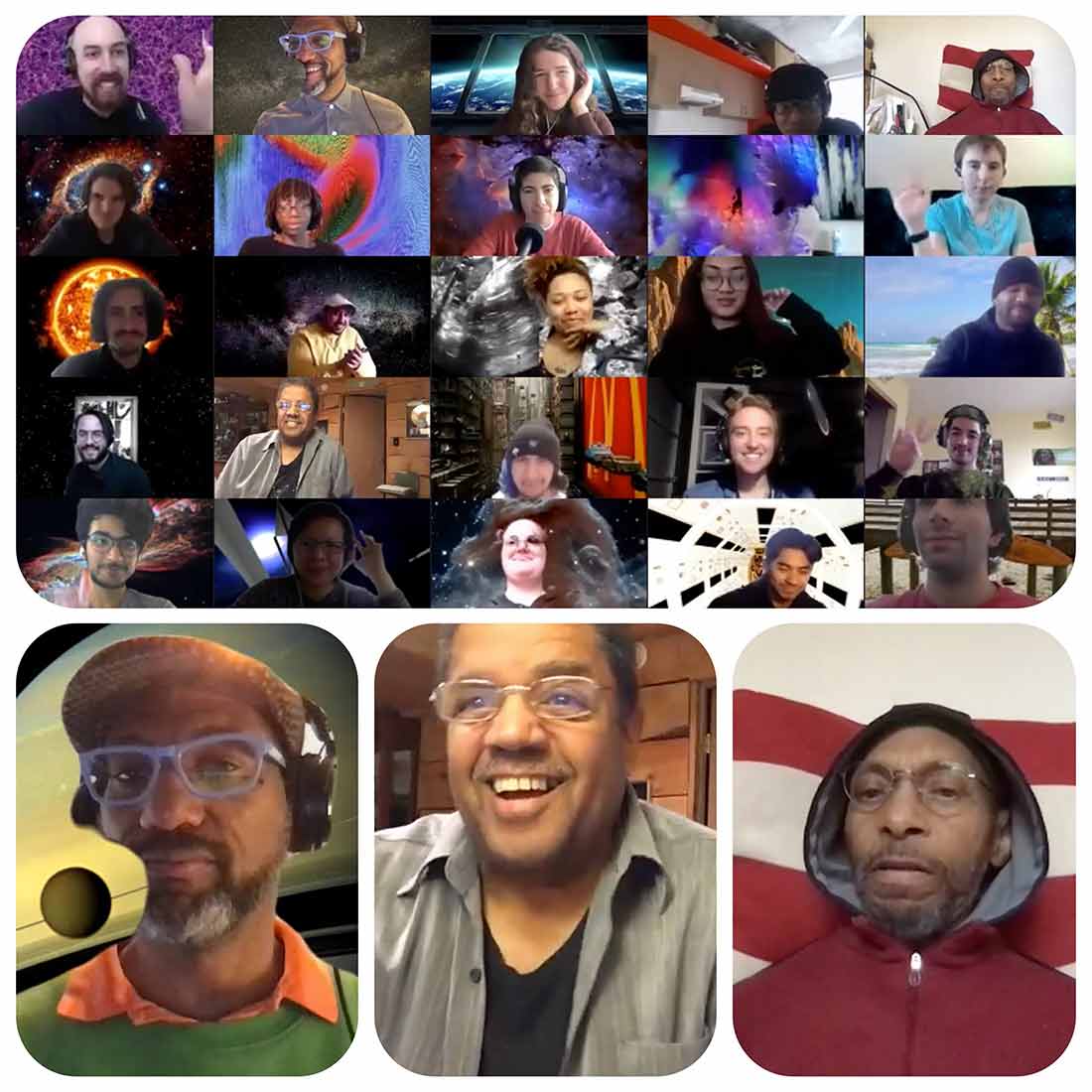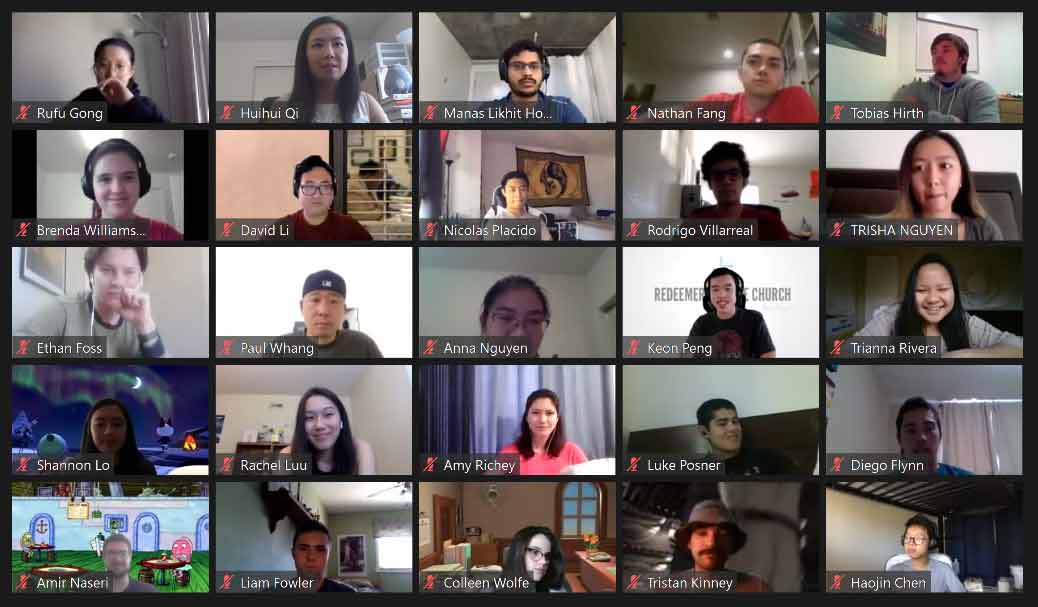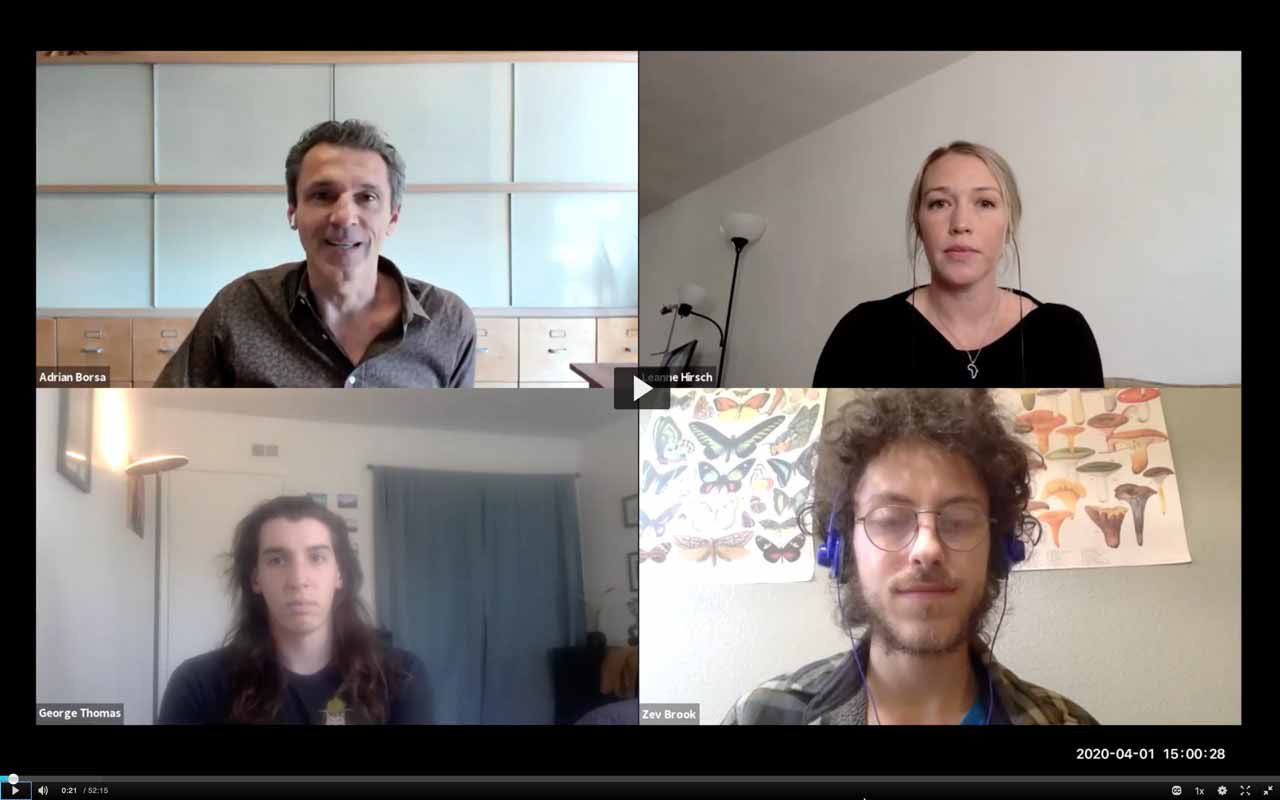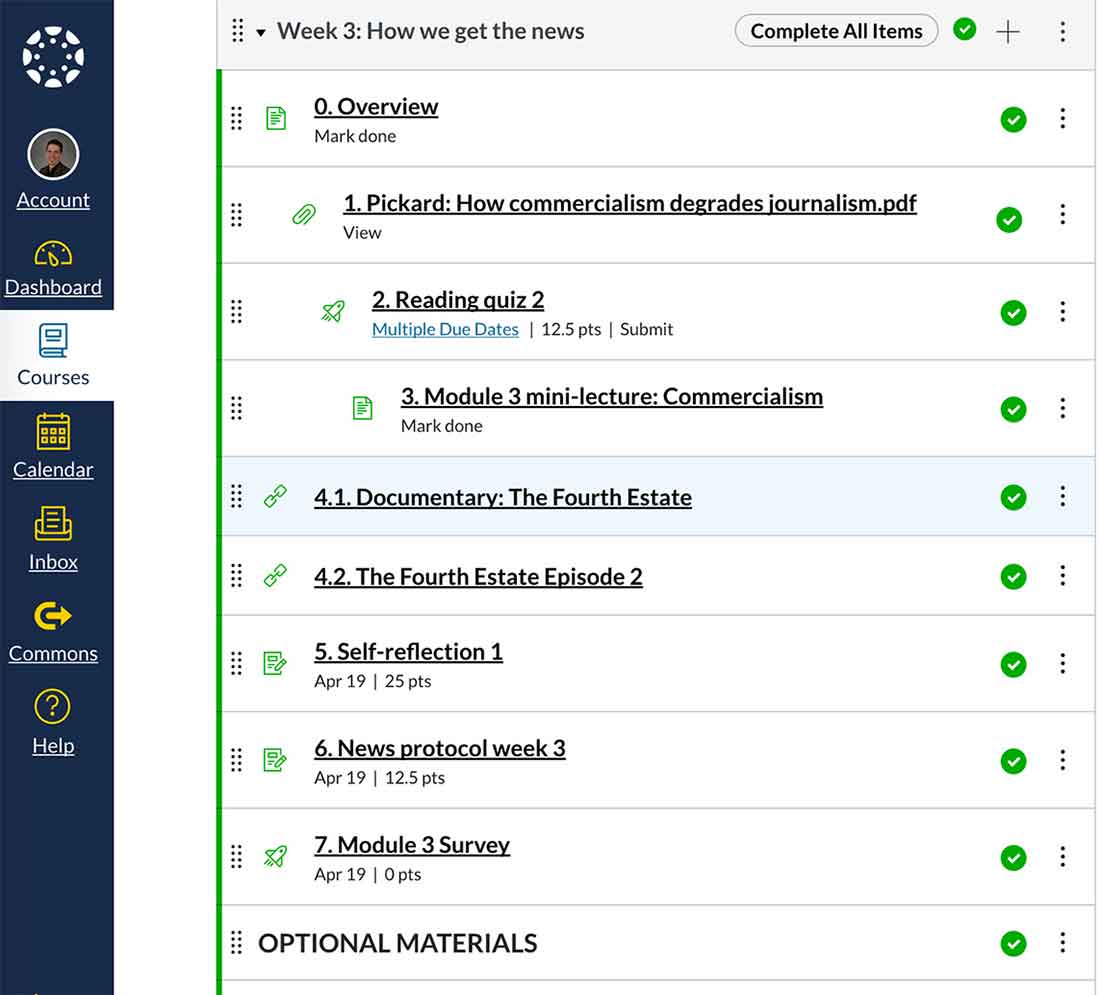
By:
- Erika Johnson
Published Date
By:
- Erika Johnson
Share This:
UC San Diego Faculty Unite to Master Remote Instruction
University’s Teaching + Learning Commons plays central role in supporting faculty

King Britt, an assistant teaching professor in the Department of Music, has adiscovered an unexpected benefit to the remote format—the ability to invite keynote musicians from around the world.
Words and formulas on a chalkboard in a large lecture hall have become digital annotations on a shared computer screen. And group discussions among students in a classroom have transitioned into breakout rooms on Zoom video conferences. At the end of winter quarter, a new way of teaching and learning became imperative in the midst of the global COVID-19 pandemic.
Faculty members across UC San Diego quickly mobilized to redesign their courses to remotely engage students. Many of them turned to the Teaching + Learning Commons for support in transitioning into the virtual realm of instruction.
In the beginning, there were many questions and concerns. Is it better to conduct live lectures on a specific day that offer real-time engagement, or pre-record talks to allow students to manage their own time wherever they are? What are Canvas modules, and what is the best way to organize video clips, readings, assignments and exams? Or simply, how do you create a Zoom account, turn on the camera and ensure the sound works?
Now at week eight of spring quarter, the sprint has settled into a marathon. Faculty members have tapped into a wealth of resources available through the Teaching + Learning Commons, which has been an important source of support for faculty, instructors, graduate instructional assistants, and students as they move to a remote learning and instruction environment. The Commons has created an integrated approach ensuring educators have the tools they need to keep teaching through partnerships with Educational Technology Services, the Library, Academic Integrity Office, Campus Privacy Office and other teams.
“UC San Diego faculty responded as a collective to creatively redesign over 1,000 courses, embrace new approaches and thoughtfully collaborate to ensure educational continuity during the pandemic,” said Executive Vice Chancellor for Academic Affairs Elizabeth H. Simmons. “This could not have been accomplished without the dedicated support and innovative resources from the Teaching + Learning Commons and collaborative campus partners.”
Zooming into the virtual realm

Huihui Qi, a lecturer in the Department of Mechanical and Aerospace Engineering, builds community in her classes through discussion boards where students start their own conversation threads, share information with each other and collaborate on learning concepts.
Thomas Schmidt, an assistant professor in the Department of Communication, is a big fan of active learning strategies that emphasize interactions among students in the classroom. When the time came to shift his course online, he arranged the elements into a mix of mini-lectures, readings, media materials and learning activities.
In his undergraduate course, “News Media and Politics,” Schmidt explained that one benefit to teaching remotely is it allows him to structure his classes deliberately and accommodate different modes of learning. “I see myself as someone who creates an immersive learning and media experience,” he said. “For example, I like combining readings with documentaries and current news clips so that students analyze media practices from a variety of perspectives.”
To assist faculty in transitioning their course to remote delivery, the Digital Learning Hub at The Commons created a course template in Canvas, a web-based learning management system. Here, faculty and instructors can find a sample course structure, module layout guidelines, academic support resources for students, and more.
“Our work is grounded in scholarship,” explained Carolyn Sandoval, interim director of the Teaching + Learning Commons. “We don’t just do what we do because we think it’s a good idea. It is based on empirical evidence of how students learn, and also in research around educational equity and faculty development.”
“I found the Teaching + Learning Commons to be a mine of treasure,” said Huihui Qi, a lecturer in the Department of Mechanical and Aerospace Engineering. “They have a huge team with extremely knowledgeable staff in educational methods and pedagogy to provide helpful resources to faculty. I was able to quickly identify the challenges and opportunities of teaching at UC San Diego as a new faculty after attending their workshops.” Qi took part in workshops and course design seminars held at the Engaged Teaching Hub at The Commons, which cover a range of topics from promoting classroom inclusion to how to use technology to enhance teaching.
Building a digital community

Adrian Borsa, a research geophysicist at Scripps Institution of Oceanography, with his instruction team for his course, “The Earth,” at the beginning of spring quarter.
It is difficult to replicate the energy and immediacy of in-person conversation, yet faculty and students are doing their best to adapt to connecting through a computer screen. Adrian Borsa, a research geophysicist at Scripps Institution of Oceanography, expected class attendance to falter, but the opposite happened. In his introductory undergraduate course called “The Earth,” Borsa found an unexpected spike in student participation during online lectures.
“We left the Zoom chat open and unmoderated during the first lecture, and it just exploded with conversations between students… about the lecture itself!” he explained. “I now use the chat function as my primary communication channel with the class, while leaving it wide open for the background patter (most of it hilarious) which helps give a sense of what is connecting and what is not.”
King Britt, an assistant teaching professor in the Department of Music, has also discovered an unexpected benefit to the remote format. In his course, “Blacktronika: Afrofuturism in Electronic Music,” Britt has begun inviting musicians from London, Philadelphia, Thailand, Denver and more as keynotes. He has found that students have become more engaged through the combination of lectures, guest presentations and live music performances.
“I feel that because the students are in a place of familiarity they tend to be more open to engagement; sometimes in-person, there is that intimidation factor in front of everyone,” noted Britt. “Also, everyone can see all of the information clearly and can hear in an immersive environment (headphones) rather than in a large hall which may not be as immersive. Nothing beats the in-person experience, but this sure comes close depending on how you present and engage.”
Faculty unite on ways to best serve students
Ensuring students connect and engage with the material and with peers online can be complicated. The Teaching + Learning Commons has guided faculty in ways to gain feedback from their students to learn more about their circumstances and any barriers they may be facing, such as living in a different time zone, not having a reliable internet connection or lacking a private space to concentrate.
“Since joining UC San Diego in the fall, I’ve been taking a number of course planning and active learning workshops at The Commons; without that set of skills and tools in my arsenal I would have felt lost,” explained Schmidt. “I’m constantly asking students for feedback and make changes accordingly. The biggest compliment came from a student who told me that the course feels very engaging and makes it easy for her to follow along, even though she's dealing with a time difference of 15 hours.”
The transition to remote instruction has been challenging for all faculty at some level. This has resulted in professors connecting with their colleagues more than ever before to brainstorm the best ways to help their students learn. Some of them have formed collectives dedicated to developing best practices.

The Digital Learning Hub at The Commons provides guidance to faculty on how best to structure their Canvas modules, including creating video clips, readings, assignments and exams.
For instance, James Nieh, a professor in the Division of Biological Sciences, describes how he and four colleagues designed a Canvas course called Biological Sciences Education (BioSciEd) for instructors to learn tips like Zoom security practices, how to hold virtual office hours and more.
Similarly, Qi described how faculty in her division created a website called “Jacobs School of Engineering Teaching Resources” to share existing and original information about tools, teaching pedagogy and best practices that promote effective remote teaching and learning.
Faculty members have been flooding the Teaching + Learning Commons website as well, with website traffic growing by 2,000% according to Karen Flammer, Director of the Commons Digital Learning Hub. Another page led by Educational Technology Services, called Education Continuity Tools and Resources, has also been a key resource.
The Teaching + Learning Commons also continues to provide critical support for students in their academic and co-curricular pursuits by offering all services online, from tutoring and writing consultations to support for experiential learning, such as internships. The Commons has posted strategies for learning remotely, including brief instructional videos, to help students learn successfully in the remote environment. Also personalized, one-on-one remote learning strategies tutoring and workshops are offered to assist students in effectively managing their learning by defining goals and developing skills that are essential to their success.
“Teaching and learning go hand in hand,” said Sandoval. “While we are working with faculty to help them get up to speed with remote teaching, in tandem, we are working with students to help them learn how to learn in this new environment.”
Share This:
You May Also Like
Stay in the Know
Keep up with all the latest from UC San Diego. Subscribe to the newsletter today.


